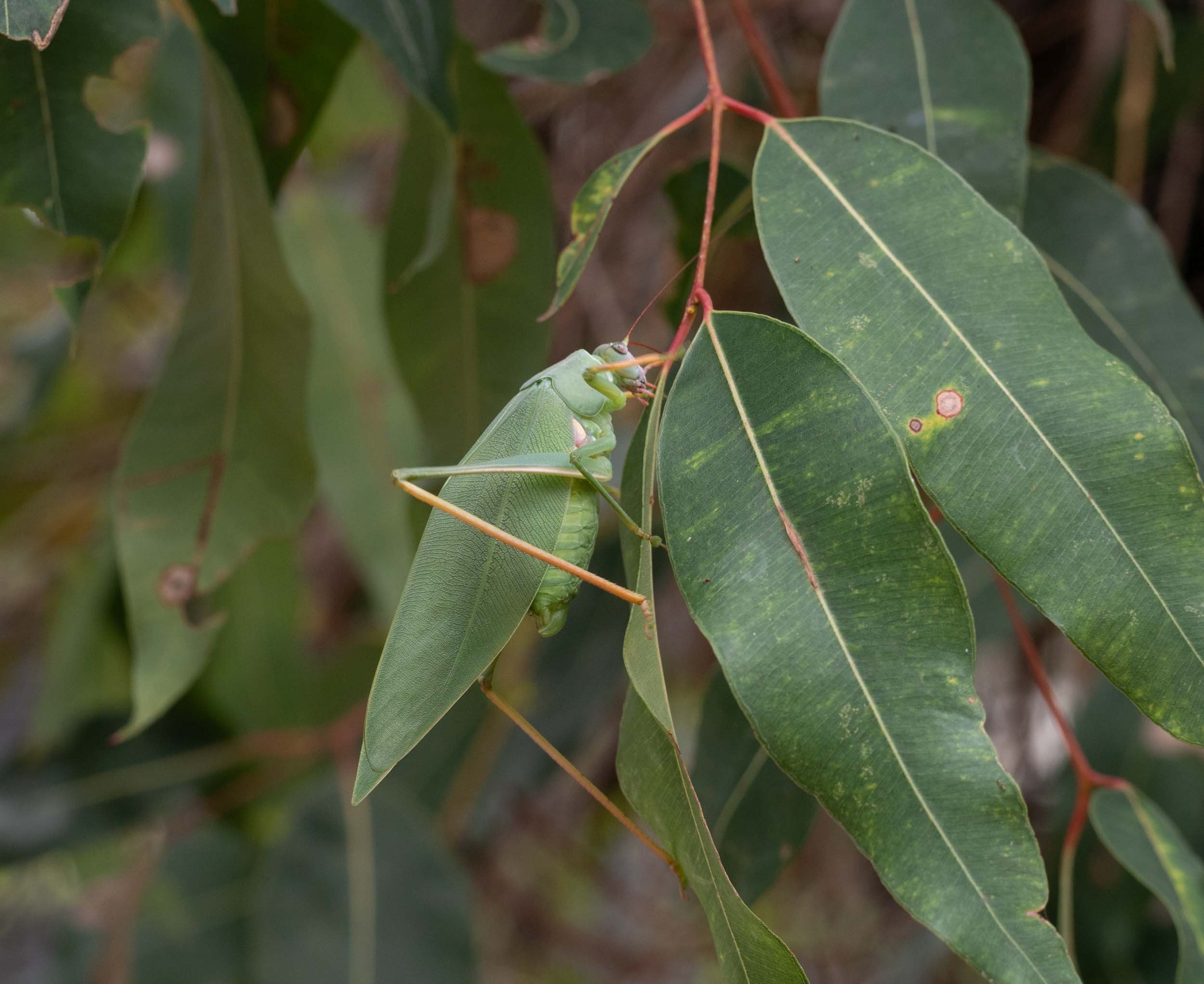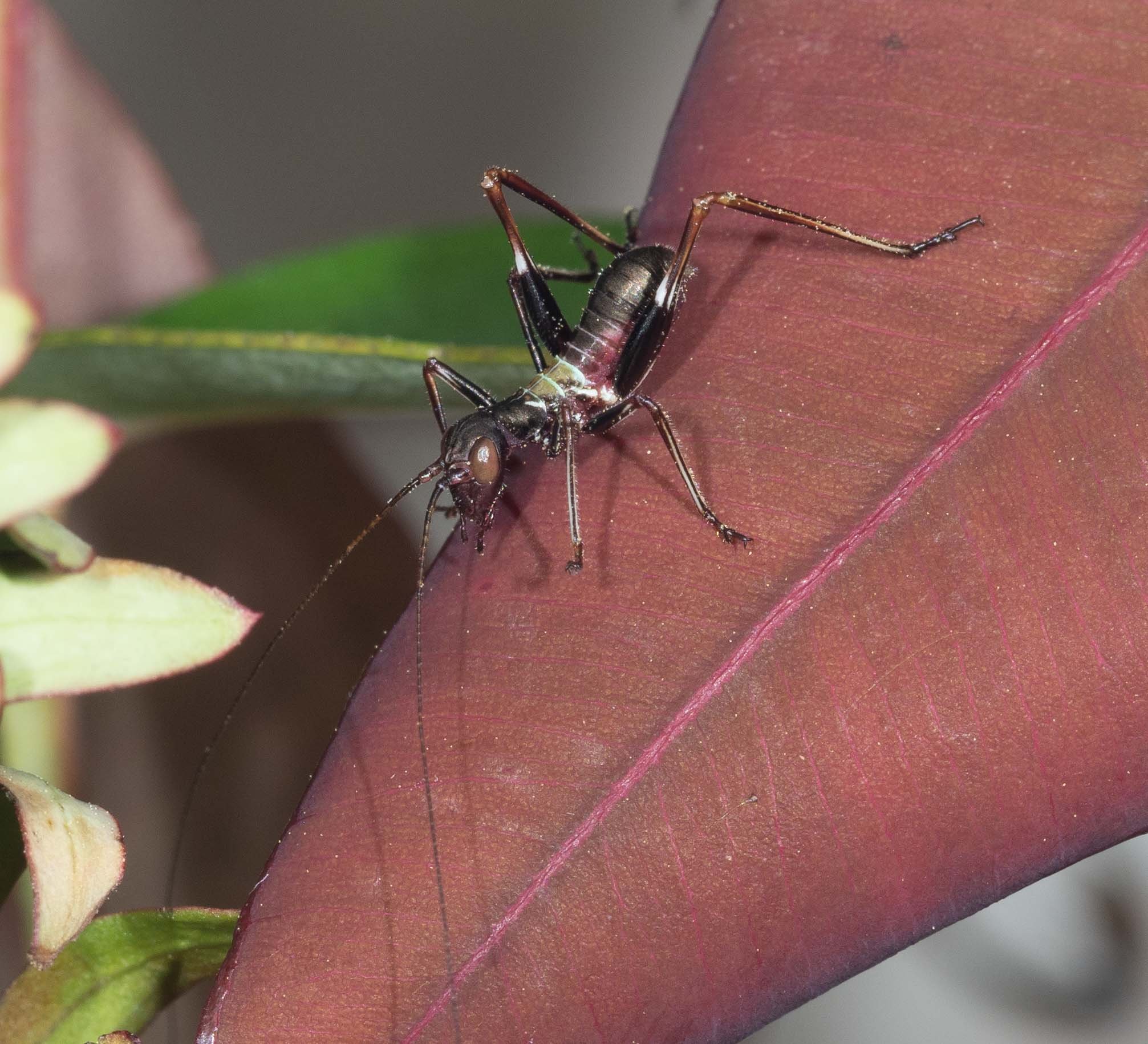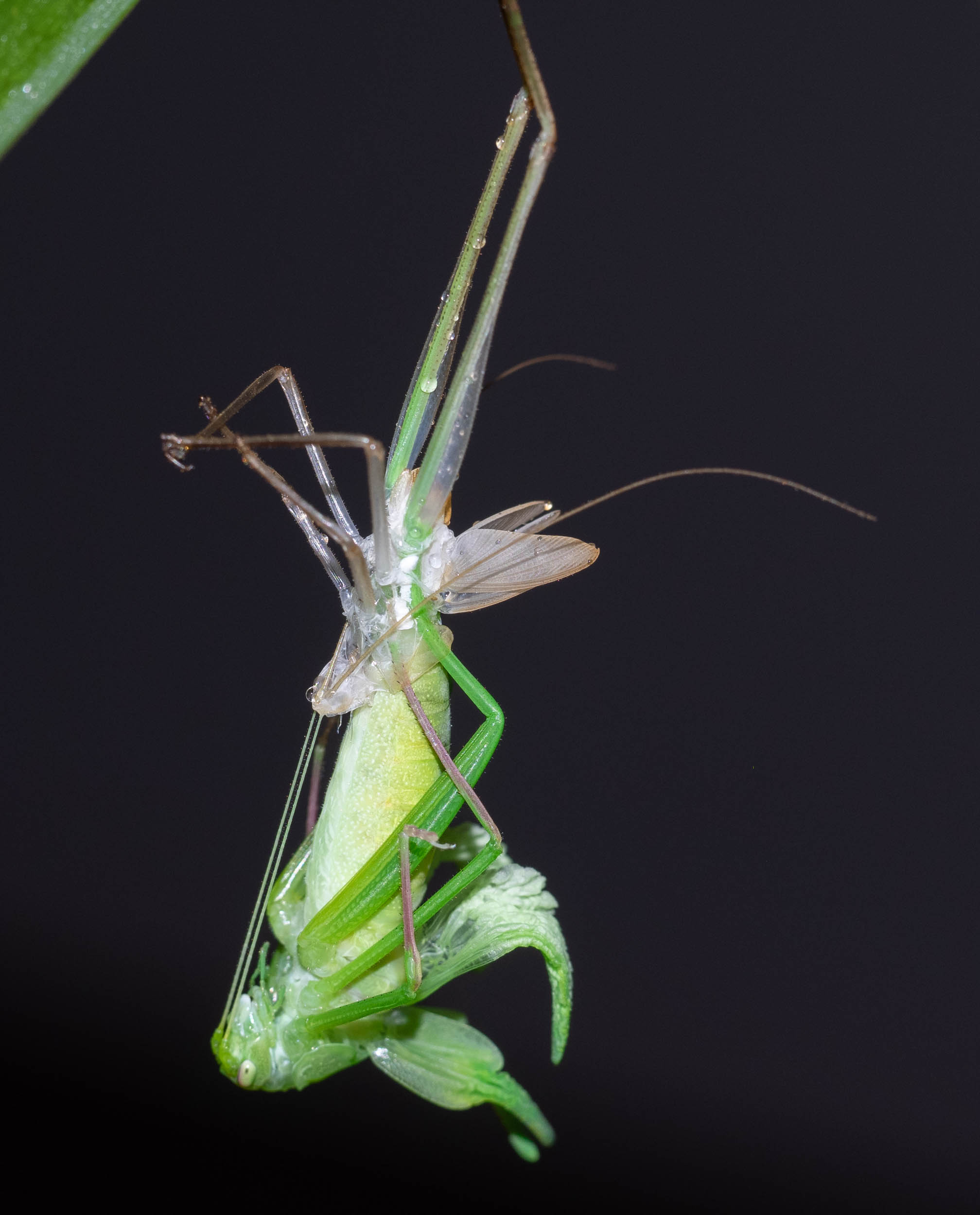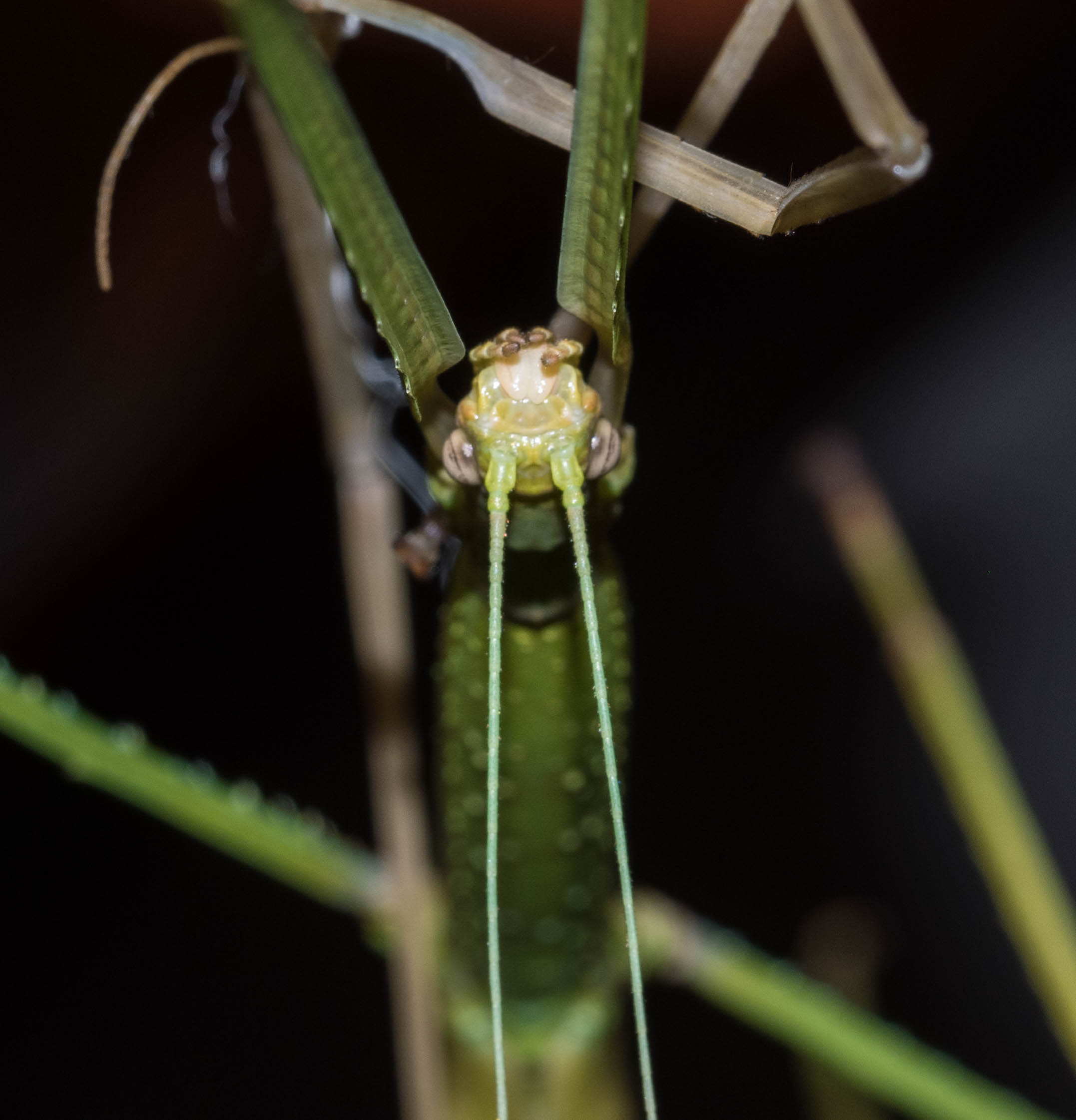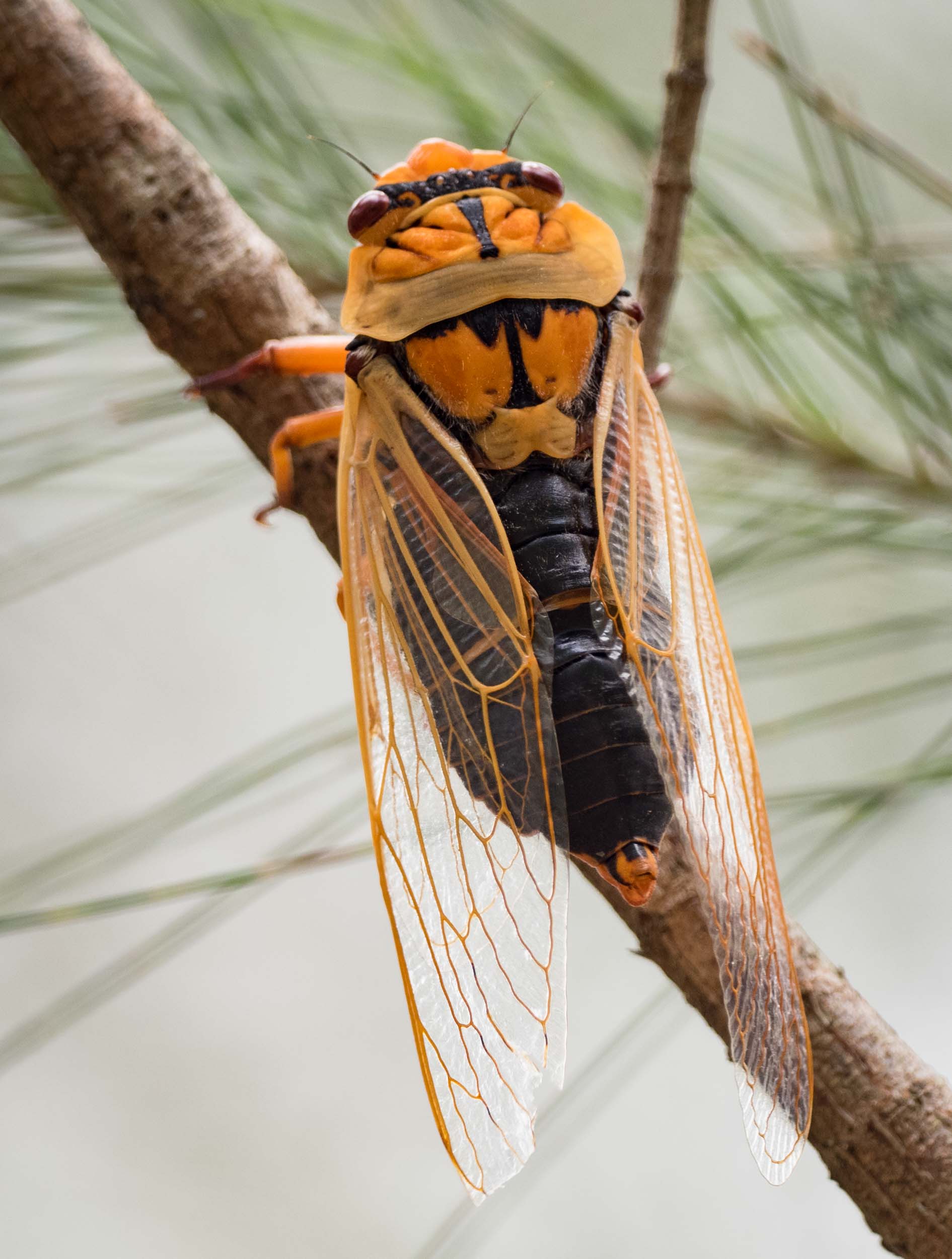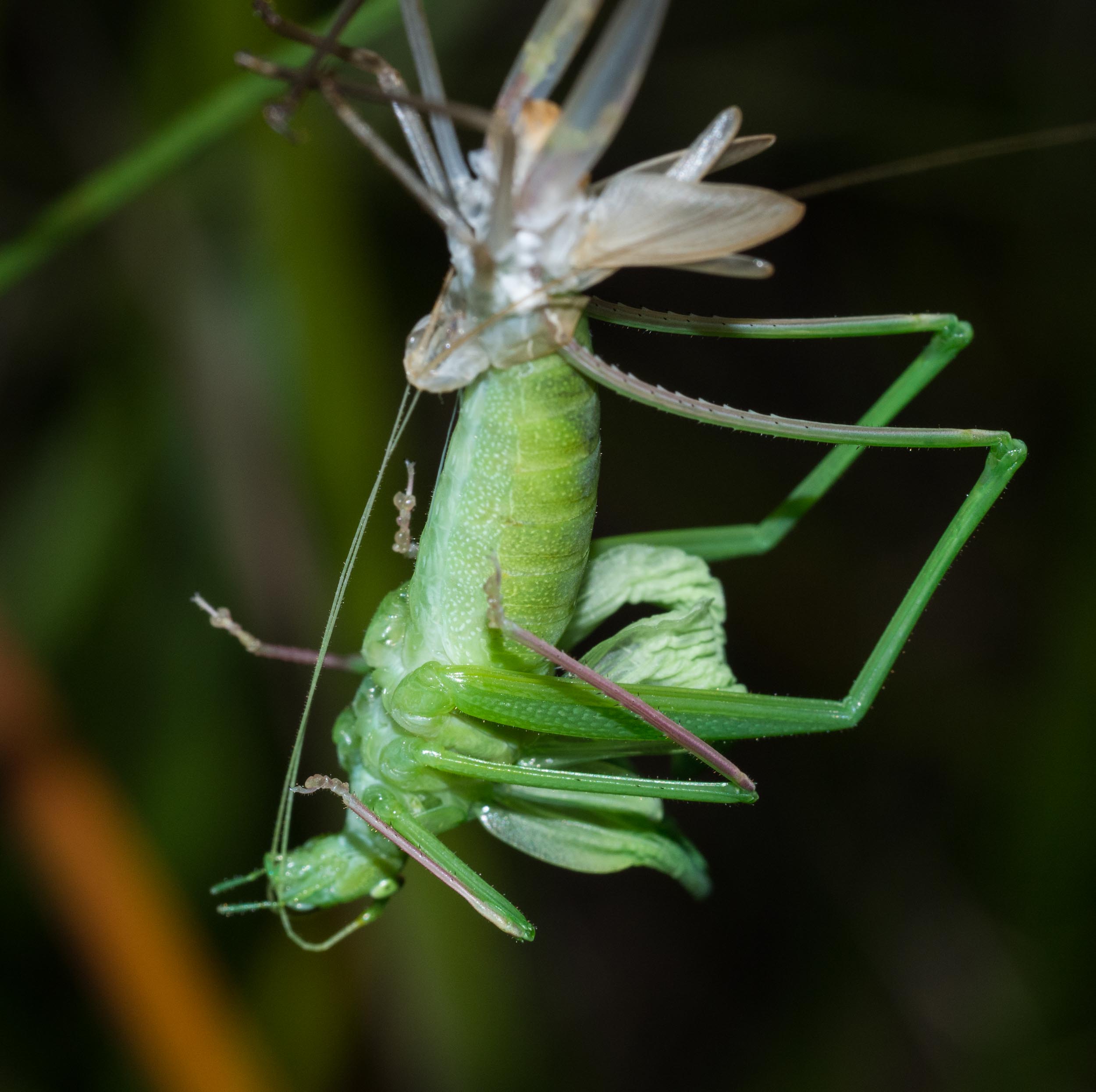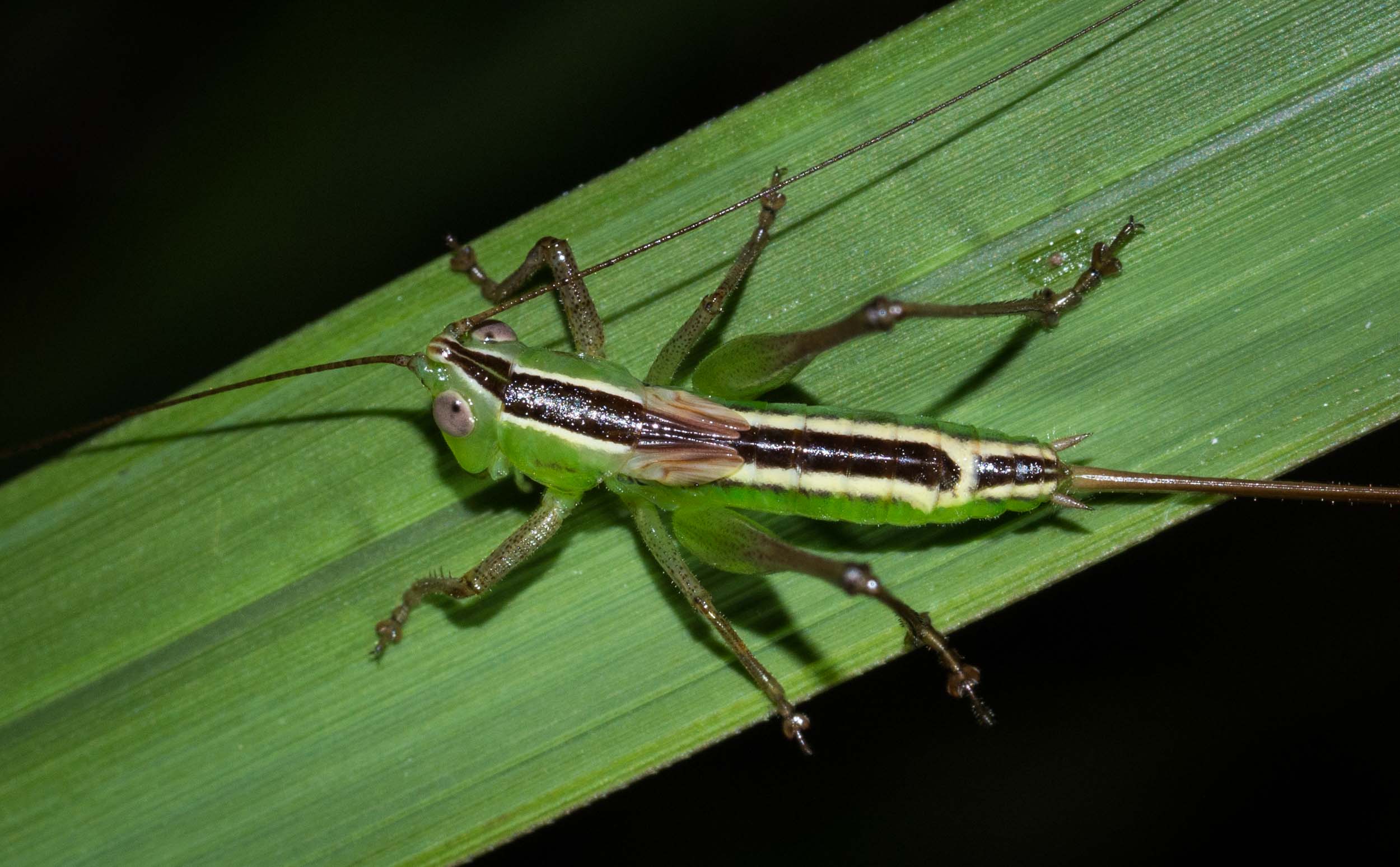Ecdysis - everyone (well most everyone) is doing it
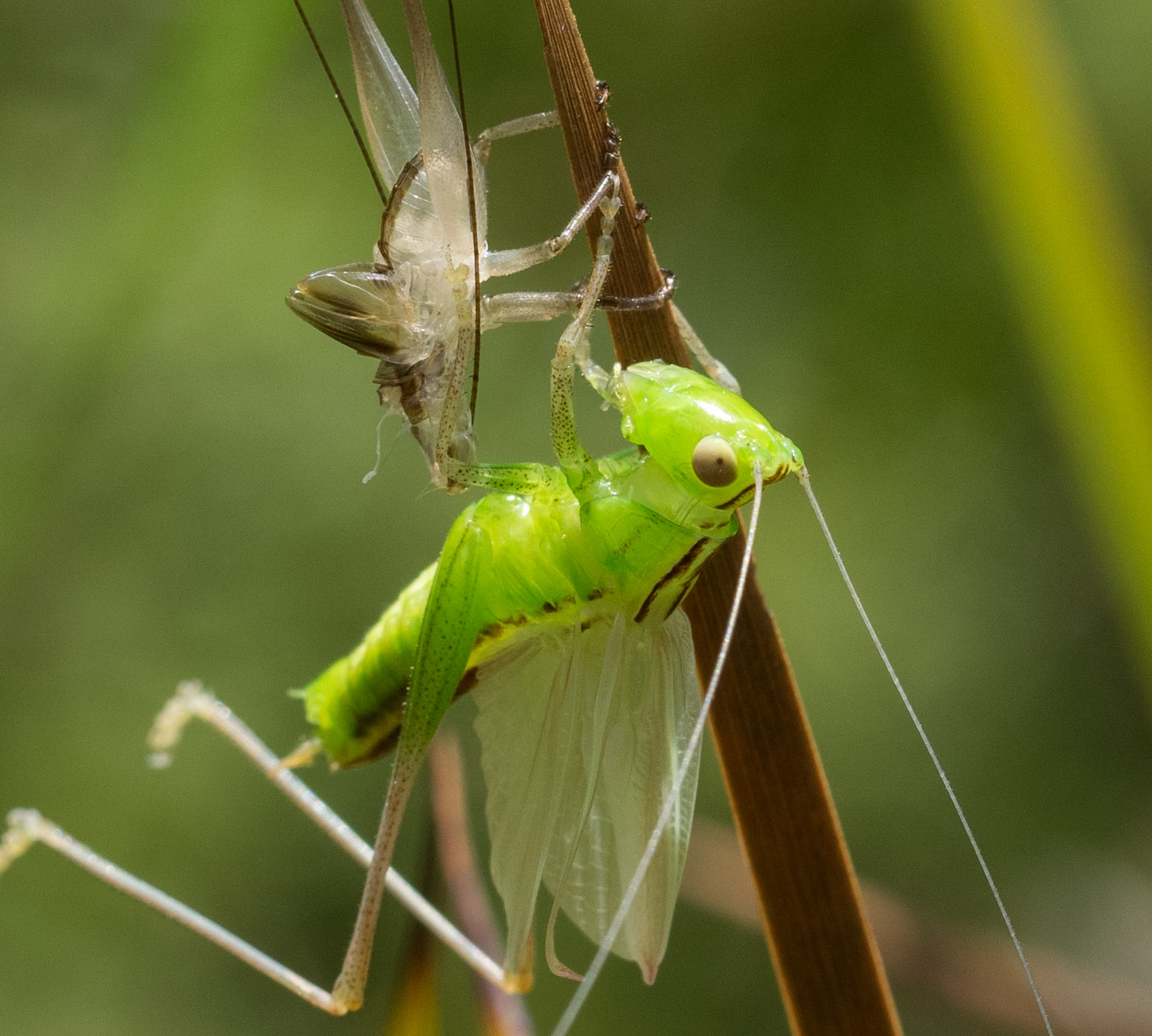
You may have seen our recent blogs of a stick insect and a damselfly moulting to the adult stage. Whilst watching Kerri photograph the damselfly going through ecdysis in our frog pond, I noticed a katydid hanging motionless on a nearby bush. It was doing exactly the same thing (ecdysis that is, not watching Kerri). I couldn't pass up the opportunity to record the process.
Time 0: The katydid had actually extracted most of its body when I first noticed it. Only the tip of its abdomen and its antennae were still trapped in the nymphal case.
Time 0 (12:20)
1 min: More of the antennae have been removed. This is quite a process for a katydid, as they have incredibly long antennae.
1 min
4:30 mins: The antennae are out! You can see them hanging down from the head. The only way the creature can withdraw its abdomen completely without dropping to the ground is to grab the sedge leaf on which it is hanging with its forelegs and its old skin with its middle legs.
If you've been following our earlier ecdysis blogs, you may notice a pattern here. The stick insect, the damselfly and the katydid all pull themselves out of the nymphal skin in the same way.
You can now see its new wings clearly. They are still white and need inflating to reach their full size.
4:30 mins
5 mins: That's it! The whole body is now out! Already the wings are noticeably larger as they begin to inflate with air and body fluids.
5 mins
12:30 mins: The katydid hung in this position for several minutes. Compare the length of the body of the newly eclosed insect with its nymphal skin. Having broken free of the confines of its previous exoskeleton it can expand - at least until its new skin hardens.
12:30 mins
17:30 mins: The katydid has now hopped away to another leaf and has obligingly provided me with a view of its back, allowing me to identify it as Conocephalus upoluensis - the Upolo Meadow Katydid. This one is a male, as it lacks the long ovipositor of the female.
Its wings have now expanded to their typical shape but will continue to lengthen. This guy hopped away to the privacy of the inner leaves of the sedge. Like most katydids, this species is nocturnal and hides away until nightfall.
17:30 mins
As I missed out on the earliest stages of ecdysis, here is a Conocephalus upoluensis nymph, which I photographed a couple of years ago, as it fed on the flowers of Ozothamnus obcordatus, the Grey Everlasting.
Late stage nymph, imaged late November, 2015
Notice its tiny wing buds - the precursors to wings. Apart from the absence of fully-developed wings, there is not a radical difference between the nymph and the adult - at least when viewed externally. The same applies to the phasmids (stick insects). Even damselfly nymphs have basically the same body structure as adults - although being aquatic nymphs, they do possess external gills which the adults lack. WARNING: Entomology rant ahead! This group of insects is said to undergo an incomplete metamorphosis - they are hemimetabolous.
Contrast this to those insects that undergo a complete metamorphosis, such as flies and butterflies. In these so-called holometabolous insects, the larvae are completely different in body structure to the adults. It is hard to imagine creatures more different than a maggot and a fly or a caterpillar and a butterfly.








